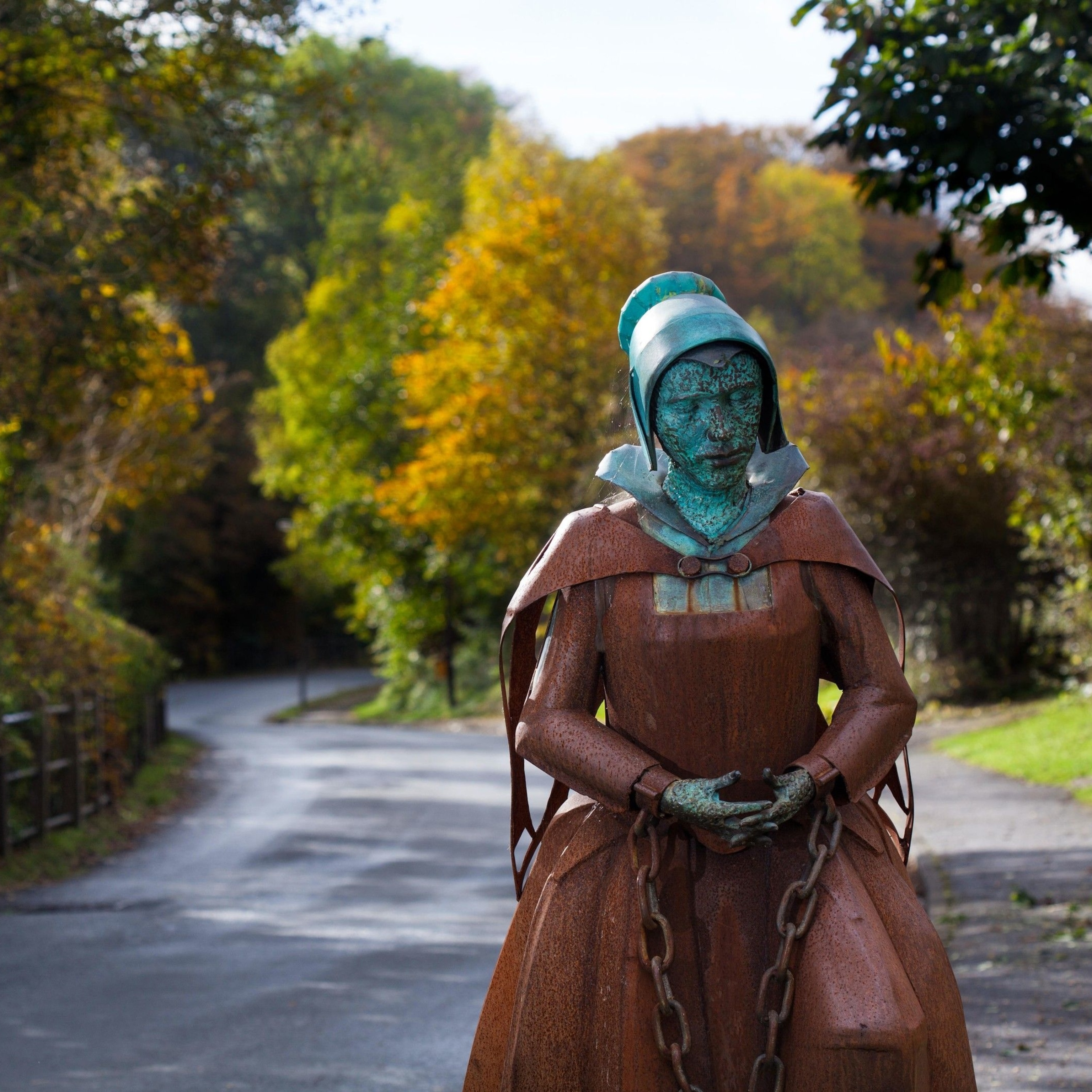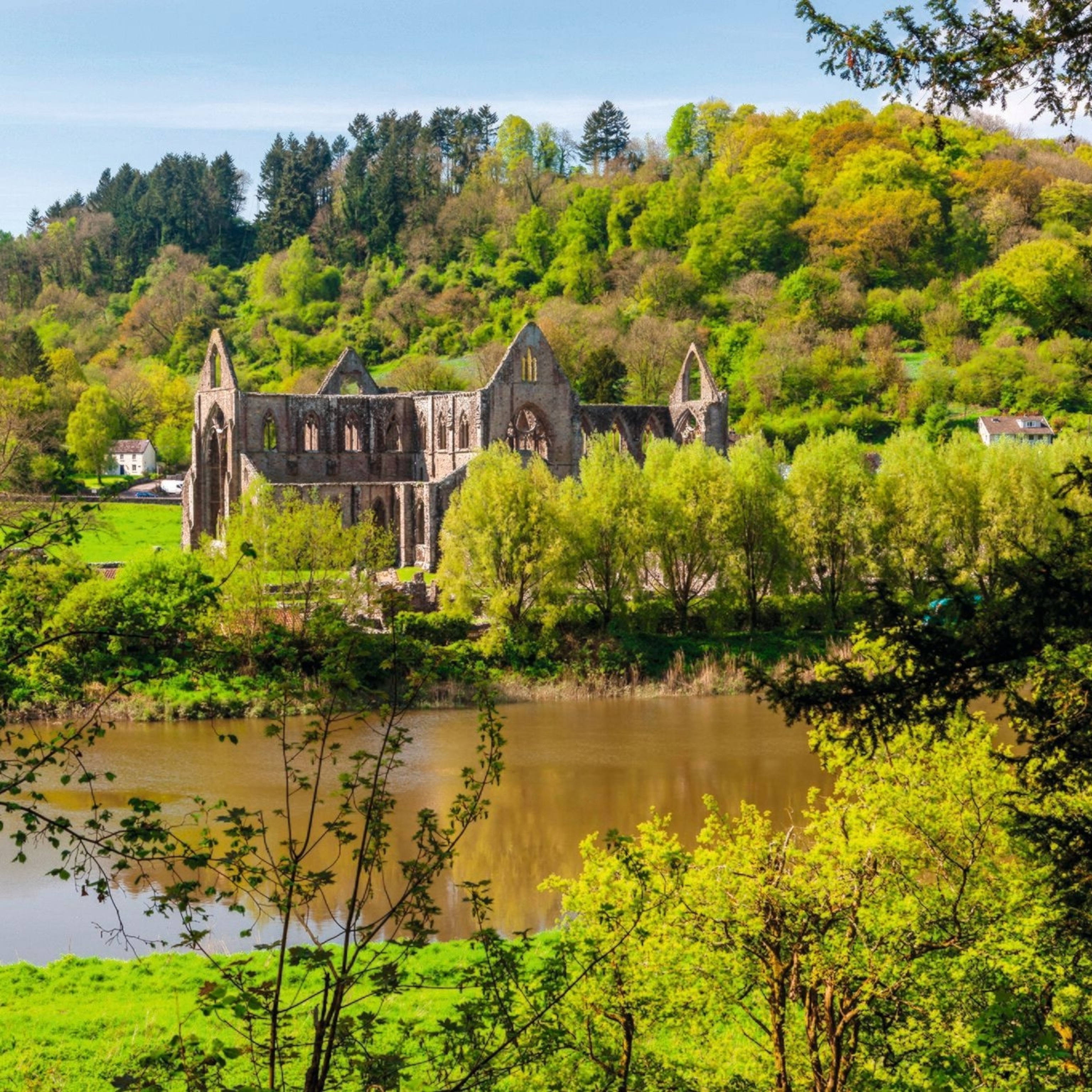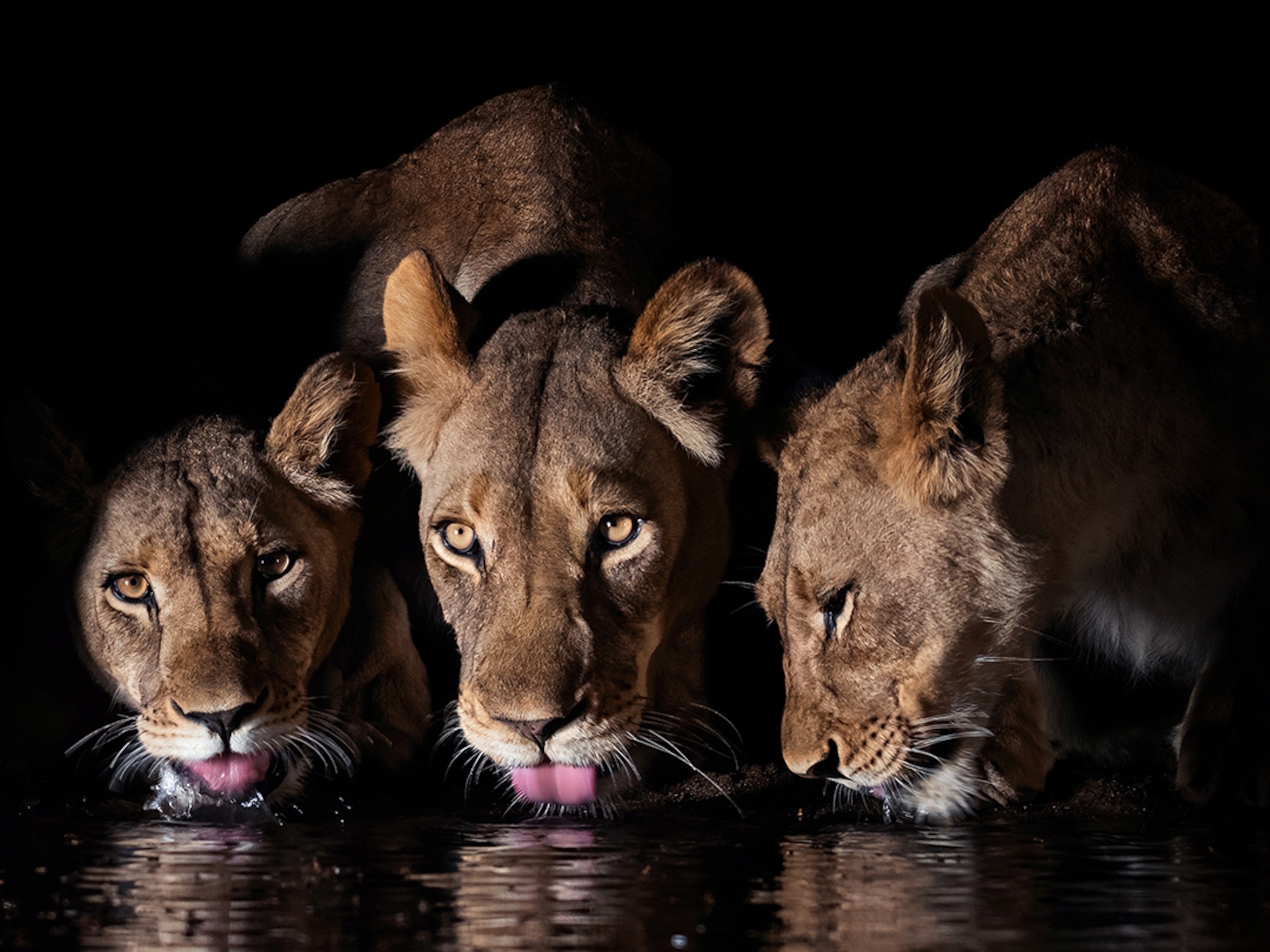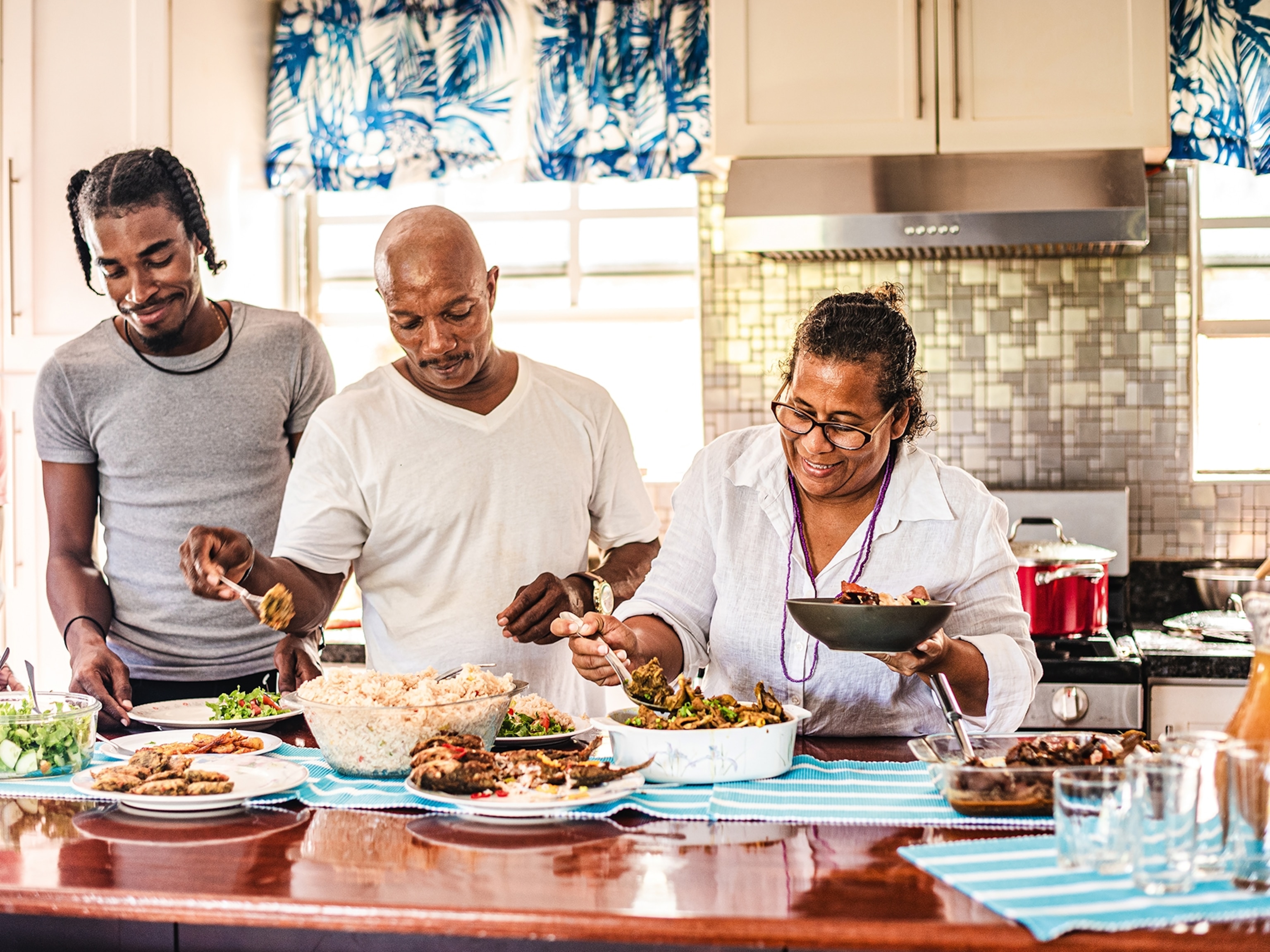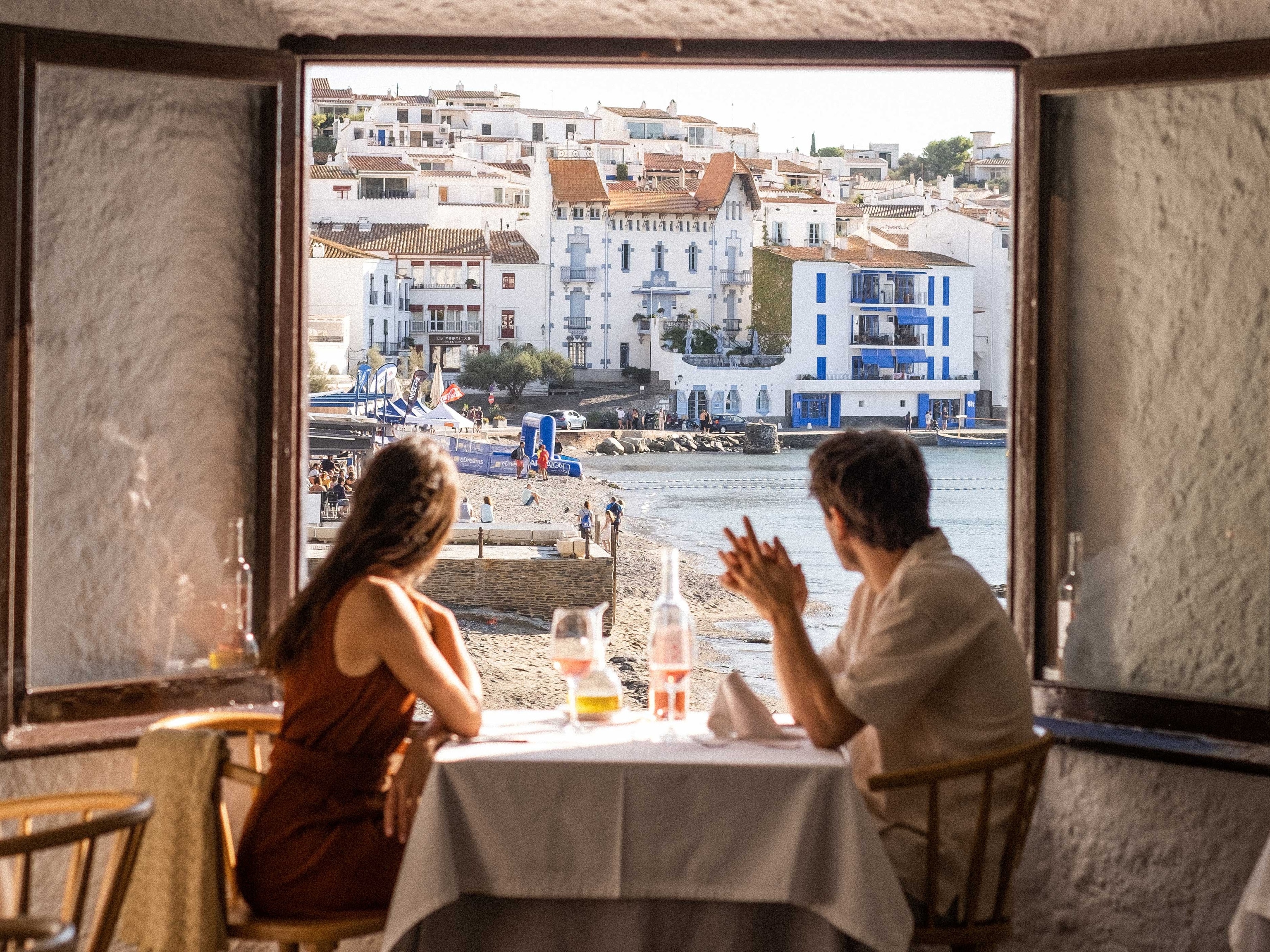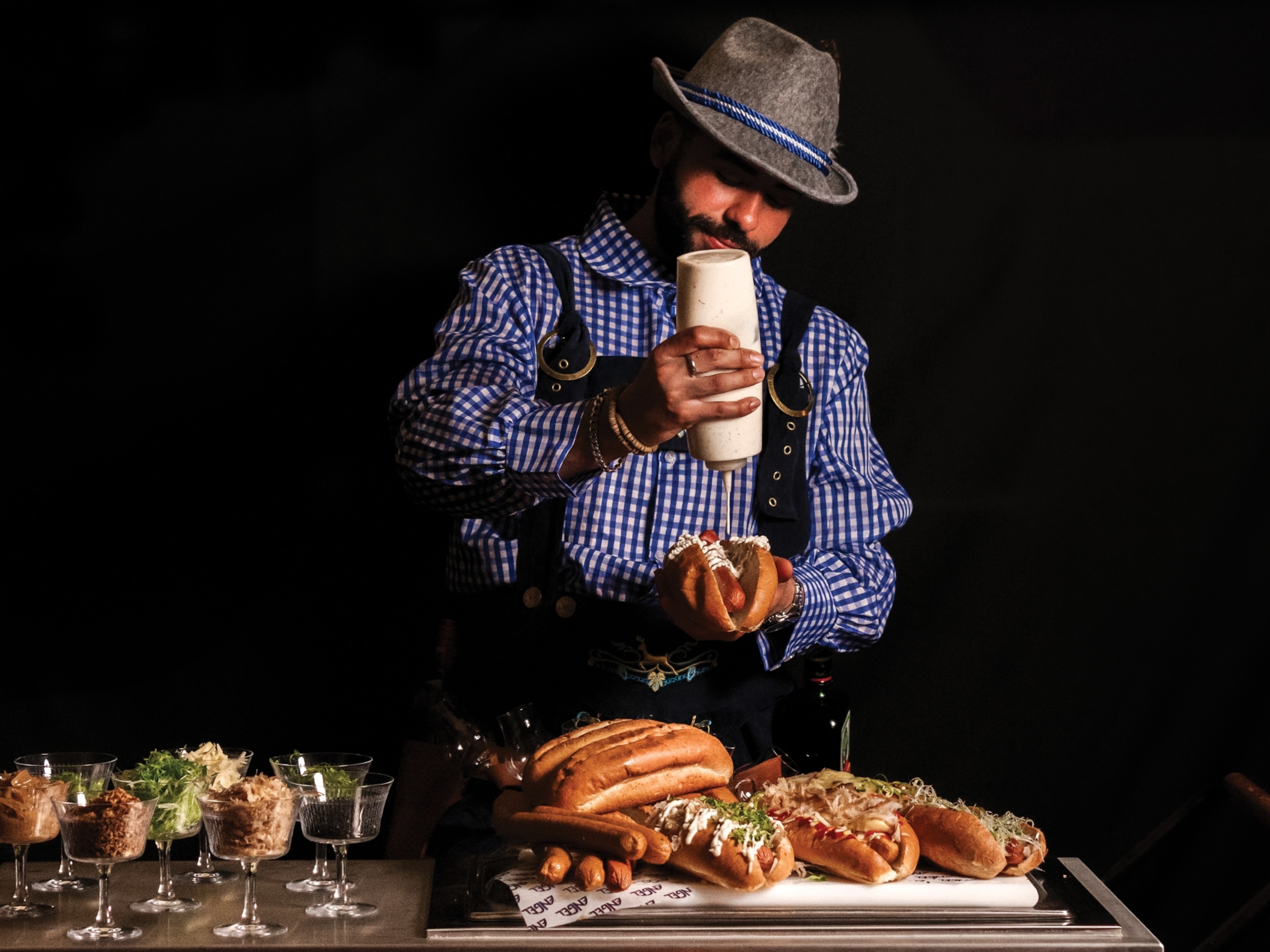
What’s it like to run one of the UK’s most unusual pubs?
From a community-owned Scottish boozer accessible by boat to a picture-perfect pub in the centre of a stone circle — we look at four of the country’s most distinct watering holes and meet the people who make them tick.
One of the joys of travelling around the UK is the thrill of discovering a truly memorable pub. While often, it’s the simple yet unbeatable combination of well-kept beer and a convivial atmosphere that makes it stick firmly in the mind, at other times it’s the sheer singularity of the pub that does the trick. From pubs that pop up in the most unlikely locations to those with strange histories or curious traditions, the UK is blessed with some truly distinct watering holes. We meet the people at the helm of four of the country’s most striking boozers.
1. Will O’Neill, The Old Forge
Mainland Britain’s most remote pub, located on Knoydart Peninsula on the west coast of Scotland, The Old Forge reopened in summer 2023 after locals raised £1m to save it. For bar manager Will O’Neill, this illustrates just how important pubs are to small communities.
My Knoydart journey started 11 years ago when I visited for a long weekend. I never left. I was accepted so quickly into the local community and fell for the place and its people. Before that I lived in Glasgow, working in bars and kitchens. My first job in Knoydart was as a ghillie working to reduce deer numbers on community-owned land.
The Old Forge had become a shadow of its former self, to the point where locals and visitors stopped going. I was one of the founding members who tried to secure the pub for the community and get our local hub back. After a year of work and many long meetings, we were able to put in an offer. I never thought I’d go back into hospitality, but I wanted to give it a go with The Old Forge. There are challenges to running a pub here — we have to get all our supplies by boat and transport them by trailer from the pier — but I love it.
Knoydart is remote, accessible only by boat, a two-day walk from Kinloch Hourn or three-day walk from Glenfinnan. The landscape’s like no other. You can escape the world and be up the hill with just deer for company.

Being in such a small community is like living in one big family; no one would ever see you stuck. The pub is the beating heart of our small community once again. It’s where we come to chat after work, debate community issues, play music and meet visitors from all over the world. We’re losing our pubs all over the country. This has been a great opportunity to show other small communities just what’s possible when you pull together.
We use as much local produce as we can. Knoydart wild venison goes into our burgers, lasagne and stew. We have seafood from nearby Mallaig and use locally roasted Knoydart coffee. The Knoydart brewery supplies us with cask ales for our hand pumps. We like to showcase what Scotland has to offer, from Isle of Eigg IPAs to Scottish gins and whiskies.
The Old Forge is special because of its location, history and people. The pub building was used by ironmongers in the 1800s and before that it would have housed tenants of the old estate. There are so many tall tales, but they have to come from the local storytellers to be believed. The Old Forge is the sort of pub where locals ask where you’re from when you pop in for a drink. Then you’re there all night, talking with different folk from the community and visitors alike. Everyone who comes has their own Knoydart experience and I hope they fall in love with the place that I call home.
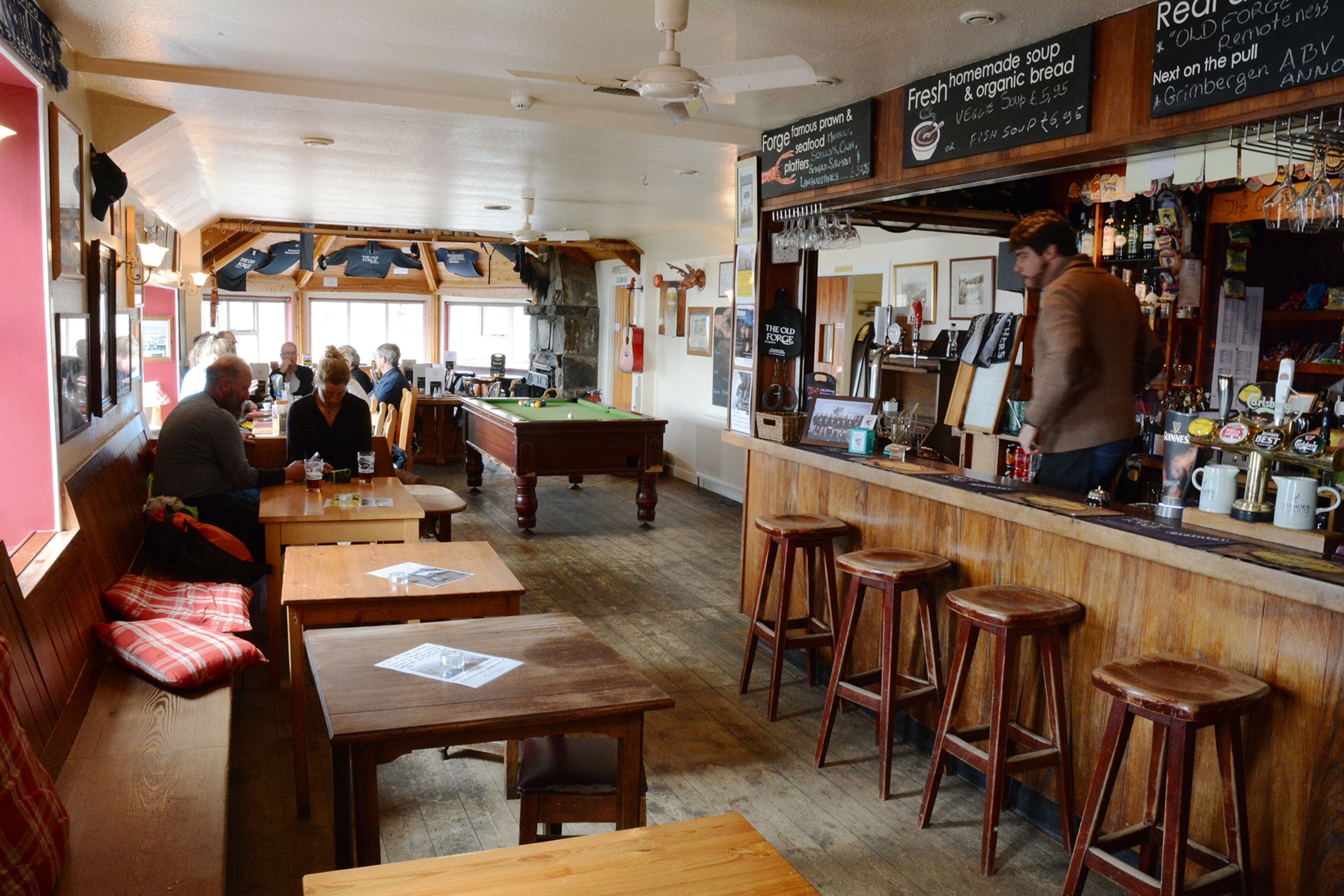
2. Jon Lowe, The Rose ‘n’ Bowl
Cheery landlord and head chef John Lowe has worked in the Rose ‘n’ Bowl, in Stacksteads, Rossendale, for nearly four decades. He also oversaw the introduction of the Lancashire pub’s infamous gravy wrestling world championship.
What brought you to the Rose ‘n’ Bowl?
I started as a chef aged 15, now I’m 54. It was a working men’s club before I took over and folk from the shoe factory used to drink here. The pub has been a lifelong love affair. The ‘Rose’ refers to Rossendale, the ‘Bowl’ to the bowling green we restored. It’s a proper community pub, with bingo on Wednesday and poker on Thursday, with £12 at stake, not your family and fortune. Our northern sense of humour is different; we don’t take ourselves too seriously. Once a punter let a Shetland pony wander right through the pub. Anything goes.
Where did the idea for gravy wrestling come from?
Lancashire is famous for its gravy! Originally, gravy wrestling was just a daft idea to promote the Pennine Lancashire Food Festival. The first event was held 15 years ago in a car park. Then my friend Andy Holt of the Real Lancashire Black Pudding Company, which makes 12 tonnes of black pudding a week, said he thought we could run with it at the Rose ‘N’ Bowl. When we held the first Gravy Wrestling World Championships, we filled a Costco paddling pool with gravy and used memory foam from the local gym to create a kind of bouncy castle for the wrestling. Around 30 wrestlers competed and 400 people watched. Since then, it’s gone from strength to strength. There were 2,000 people at the last one.
What does it involve and what are the rules?
It’s crackers but it’s fun and raises money for a local hospice. We hold it once a year on August Bank Holiday. Anyone who’s over 18 and reasonably fit can take part. To be honest, if you’re a first-timer it can be hard to even get a footing in the slippery, knee-high gravy. Competitors in fancy dress wrestle for two minutes in a 16ft pool filled with vegetarian Lancashire gravy. We once used Bisto but it stank and attracted wasps. Points are awarded for performance: takedowns and comedy value. The only real rule is not to hurt your opponent. I last did it six years ago and vowed never again. I got beaten by a chicken from Bolton!
Any memorable moments?
Once a woman dislocated her shoulder. It went floppy, but she asked for half a cider, popped it back in like the scene in Lethal Weapon and went on to win. Some wrestlers have lost their clothes in the gravy and streaked round the place. The wrestling has become crazily popular. We get people from all over the world — Australia, China — and TV celebrities like Will Mellor and Rory McGrath.
What’s special about your pub and its location?
This was once a valley of mills and stone quarries. We get a lot of mountain bikers heading to Lee Mill Quarry nearby. We’re a friendly spot for a carvery (with Lancashire gravy, of course) and pint of Reedley Hallows. Our regulars tell us it’s like coming home. I still know customers from when I first became landlord 33 years ago — now they bring their kids and grandkids, and it makes me smile. There are three things in life that tell the truth: alcohol, children and leggings. You see the lot here.
3. Rita McCluskey, The Adam and Eve
As the landlady of what’s thought to be Norwich’s oldest pub, Rita McCluskey is acutely aware of its historical quirks, from the monks who used to own it to the ghosts that steal customers’ coats and scarves.
The Adam and Eve has always been a much-loved Norwich landmark, so I jumped at the chance when it came up for sale.
It’s very unusual: small in size, but huge in terms of history and character. Newcomers to the pub are advised to ‘duck or grouse’ as they enter — that low doorway has caught many out. Tall folk beware! It’s probably the oldest pub in Norwich, a city once renowned for having a pub for every day of the year.
The pub’s stories and legends are woven into its fabric.
It’s in the shadow of the city’s magnificent medieval cathedral, law courts and Great Hospital — another survivor from the Middle Ages. In 1249, a small army of hungry, thirsty stonemasons was working on Norwich Cathedral. Supply met demand and the Adam and Eve alehouse was born, serving workers bread, cheese and ale.
Although the pub’s structure has been rebuilt, you still get a sense of that time.
The cathedral spire towers over the pub. Monks from the still-functioning Great Hospital were the first owners of the pub — and doubtless brewed their own beer. There’s evidence of an Anglo-Saxon well below the foundations. Records date to the 13th century, but it’s easy to imagine brewing going on long before, given the supply of fresh water.
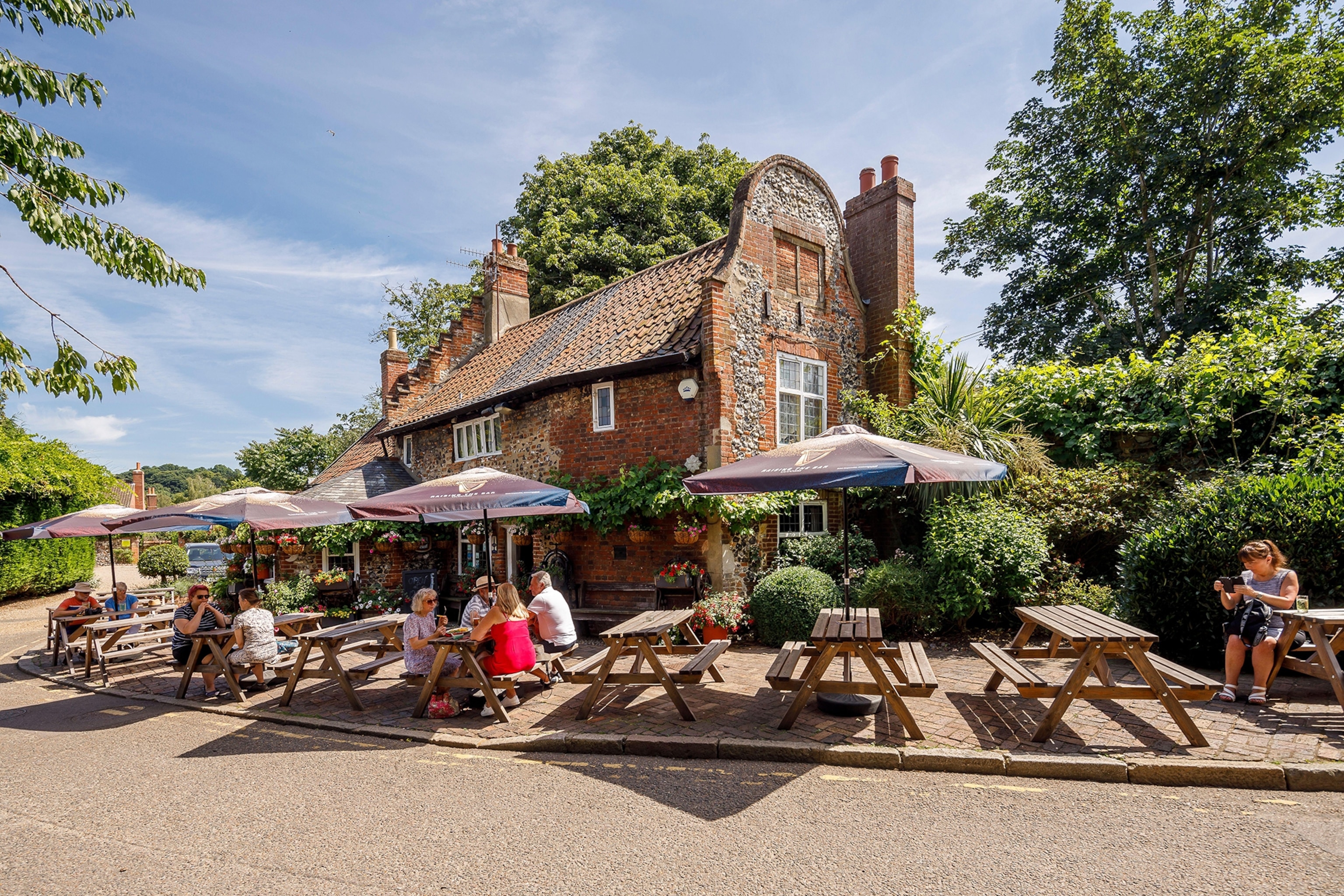
It’s believed the monks supervised the building in brick and locally quarried Norfolk flint.
They added the characteristic Flemish-style gables. From the 16th century, textile workers from the Low Countries and France worked in the city’s cloth trade. These ‘strangers’ put their own stamp on Norwich, including the Adam and Eve.
A pub this old just has to be haunted, and spooks abound.
It’s said that spectres of medieval French-speaking monks have been spotted (and heard) beneath the flagstones in the lower bar. But much more famous is ‘Sam’, the friendly ghost of Lord Sheffield, who was mortally wounded in battle while trying to defend the city and quell rebels during the 1549 Kett’s Rebellion. It’s thought he died at the pub and haunts it to this day. Some regulars claim Sam makes off with coats and scarves (usually returned the next day). We’re the starting point of Norwich’s weekly ghost walks.
In Norfolk, they say we ‘do different’.
The Adam and Eve is certainly that. It has old-fashioned charm, with no TV or music. The focus is on conversation. It attracts a loyal band of regulars and tourists, and it’s this mix of down-to-earth Norwich character and cosmopolitan fizz that makes it unique. Celebrities who’ve enjoyed a pint here include singer Feargal Sharkey, comedian Vic Reeves and Norfolk pop artist Colin Self.
This is apparently the last Norwich pub to serve ‘from the wood’ (straight from the barrel).
Our beer is said to be the best in the city, particularly the Adnams bitter. I like to tell appreciative drinkers it’s like an angel dancing on your tongue!
I love this pub because its history is a living thing — one that’s added to whenever a fresh visitor steps through that low doorway.
In winter it’s cosy, with people coming in from the cold and festive shopping for a glass of mulled wine. In summer the scene moves outdoors, with drinkers and diners packing out tables and benches. All of them add to the folklore which keeps pubs, even in the tough times, the centres of our communities.
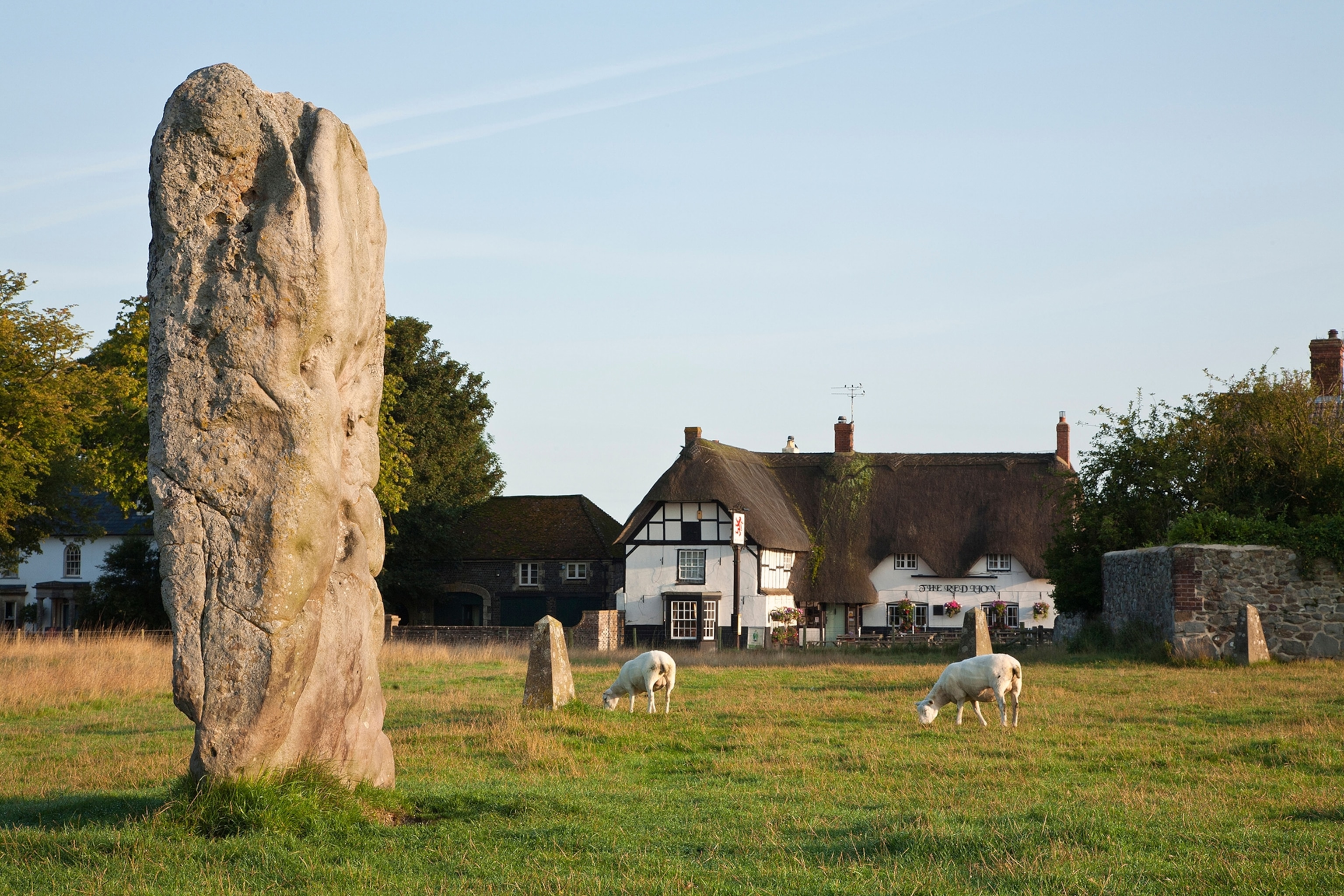
4. Huw Thomas, The Red Lion
A regular at The Red Lion in Avebury long before he took the post of general manager, Huw Thomas has always been a fan of the pub that sits in the middle of one of the UK’s most famous stone circles.
What’s unusual about The Red Lion?
It’s surrounded by Neolithic monuments and beautiful countryside. It’s in a unique spot in the centre of Avebury’s prehistoric stone circle, which is the largest in the world. It’s one of Britain’s most photographed pubs: picture-perfect, whitewashed and thatched. Dating back to the early 17th-century, the building was originally a farmhouse, then a coaching inn. And the indoor well has been converted into a spectacular table that locals have spooky theories about.
The pub is said to be among Britain’s most haunted. Is this true?
It’s been voted as one of the world’s top ten most haunted pubs. Apparently, we have at least five resident ghosts, the most famous being Florrie, murdered by her cavalier husband when he returned from the Civil War and found her in the arms of her lover. She sits by the well and it’s thought she’s responsible for throwing little things across the bar. Other ghosts include a horse and carriage that clatters across the courtyard.
What’s there to see for history lovers?
As part of a UNESCO World Heritage site, the pub is a stone’s throw from fascinating landmarks, including prehistoric Silbury Hill. Situated less than a mile away, the hill is Europe’s largest artificial chalk mound. The surrounding countryside is ideal for a long, peaceful walk, followed by a heart-warming meal and a glass of smooth Avebury Well Water brown ale.
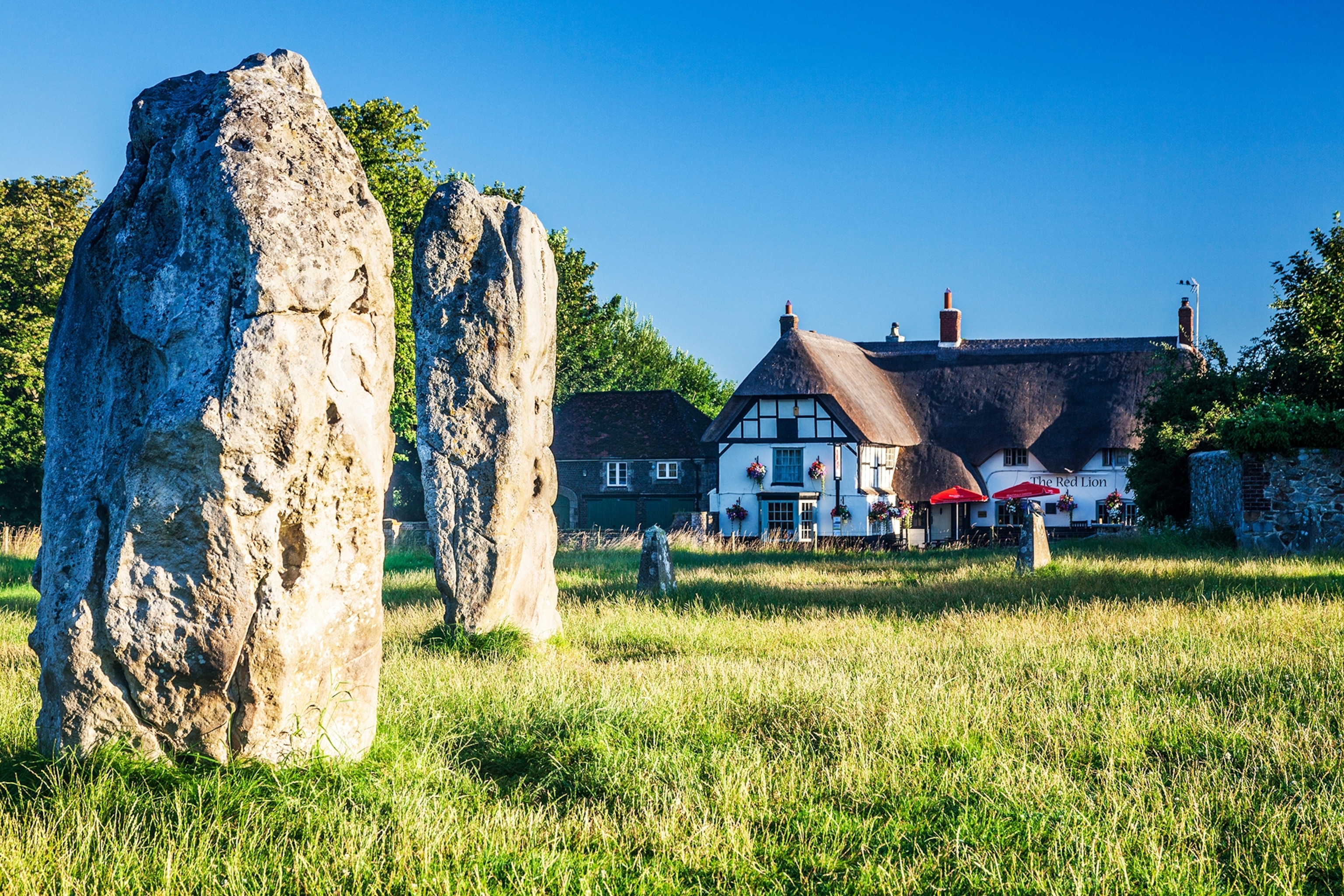
When is the best time to visit to feel the power of the past?
Many of the festivals we recognise in England historically stem from pagan history and the Neolithic stones, for instance May Day (Beltane), the solstices, harvest and Halloween. There are festivals here every six weeks and all can be traced back to their pagan roots. Their influence on our pub is massive.
What role does the pub play in the local community?
Avebury is home to around 400 people, and this is its only pub. In summer, we get a lot of tourists, but in winter it’s very local-led. Our regulars hold an open mic night once a week, which has evolved into a folk event that goes ahead come rain or shine. As a village boy, I firmly see the pub as the hub of the community. To become the pub guardian is an honour. I know I would visit if I didn’t work here — and I did, many a time.
To subscribe to National Geographic Traveller (UK) magazine click here. (Available in select countries only).
